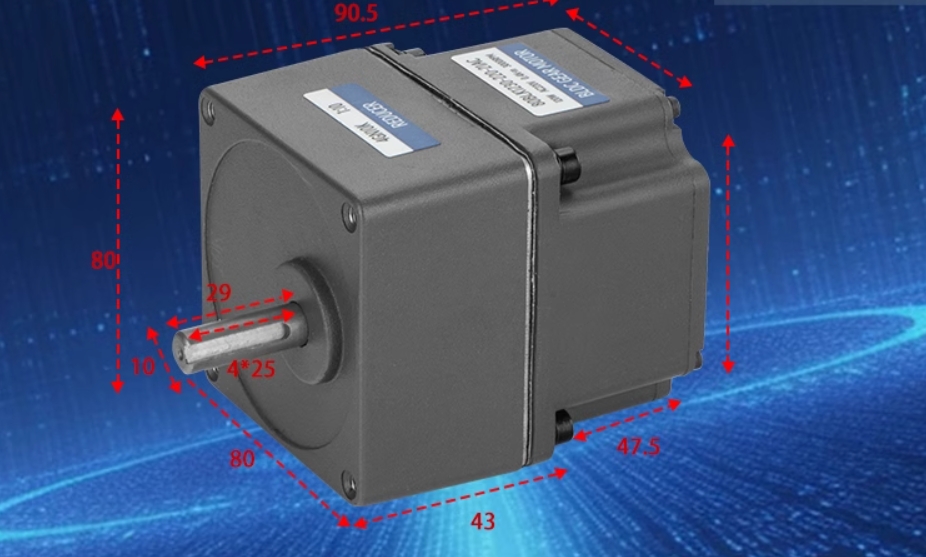Three ways to speed up the design cycle using brushless DC motors
The world is committed to reducing power consumption, and the momentum is getting stronger and stronger. Many countries require household appliances to meet efficiency standards set by relevant organizations such as the China Institute of Standardization (CNIS), the US Energy Star and the German Blue Angel. To meet these standards, more and more system designers are moving away from the simplicity and ease-of-use of single-phase AC induction motors in favor of more energy-efficient low-voltage brushless DC (BLDC) motors. In order to achieve longer service life and lower operating noise, designers of small home appliances such as sweeping robots are also turning to more advanced BLDC motors in many of their systems. At the same time, advances in permanent magnet technology are continuously simplifying the manufacturing of BLDC motors, reducing system size while providing the same torque (load), and can also improve efficiency and reduce system noise.
Designing systems using BLDC motors is challenging because complex hardware and optimized software design are often required to provide reliable real-time control. One option to speed up the design cycle is to use BLDC motor modules from specialized suppliers, but these modules are not optimized for the needs of the specific system. Therefore, in order to build an optimized high-performance system to meet specific application needs, a deep understanding of motor design and control is still required, even when using modules. In this article, I will introduce three methods that can speed up the design of BLDC motor systems while also providing smarter and more compact energy-saving solutions.

Method 1: Sensorless control without programming
The no-programming motor driver includes built-in control commutation algorithms, eliminating the need for motor control software development, maintenance and certification. These motor drivers typically take feedback from the motor (e.g., Hall signals or motor phase voltage and current signals), calculate complex control equations in real time to determine the next motor drive state, and provide a gate driver or metal-oxide-semiconductor field-effect transistor ( Analog front-end components such as MOSFETs provide pulse-width modulated signals.
When using a motor driver with integrated sensorless control capabilities, such as the MCF8316A motor driver with field-oriented control (FOC), for real-time control, there is no need for a Hall-effect sensor in the motor, thus increasing system reliability and reducing overall system cost. Motor drivers that do not require programming can also manage important functions such as motor fault detection and implement protection mechanisms to make the overall system design more reliable. These devices can come with pre-certified control algorithms implemented by certification bodies such as Underwriters Laboratories, allowing OEMs to reduce design time for their home appliances.
Method 2: Easily tune the motor using smart motor control
System performance parameter requirements such as speed, efficiency, and noise are difficult to address by tuning BLDC motors. This problem can be solved by developing a sensorless trapezoidal control algorithm, in which the commutation is determined by the back-EMF voltage of the motor, making the adjustment operation independent of the motor parameters. Integrated motor drivers, such as the MCT8316A, with sensorless ladder control capabilities can provide optimized system performance without the need for complex interfaces to microcontrollers. Also, note that during motor tuning, the integrated motor driver provides feedback signals such as motor phase voltage, current, and motor speed displayed on an oscilloscope.
In the sensorless FOC algorithm, motor tuning can be significantly accelerated due to the integration of advanced control technology, for example, by measuring the motor parameters on its own or automatically performing the tuning of the control loop. The guided tuning graphical user interface (GUI) provides default motor start options to help smooth the tuning process and get the motor spinning as quickly as possible. Motor drivers that require no programming, such as the MCF8316A for FOC and the MCT8316A for ladder control, include multiple configurable options for motor start as well as closed loop and motor stop operation. With these options, motor performance can be optimized in minutes, significantly shortening design cycles.
Method 3: Reduce size
Building BLDC system hardware is a daunting task for many system designers. A typical system requires gate drivers, MOSFETs, current sense amplifiers, voltage sense comparators, and analog-to-digital converters. Most systems require a dedicated power architecture (including devices such as low-dropout regulators or DC/DC buck regulators) to power all components on the board. The integrated BLDC driver combines all these components to provide a compact yet easy-to-use solution.
Motor drives with integrated control include protection features such as overcurrent and overvoltage protection for MOSFETs and temperature monitoring, allowing designers to easily deliver robust solutions. For motor applications that consume less than 70W, such as sweeping robots, household ceiling fans, or pumps used in washing machines, devices with integrated MOSFETs can be selected to further reduce board space. The MCF8316A and MCT8316A devices support peak currents up to 8A in 24V applications. For high-power applications, the power MOSFETs can be placed on the board, allowing the gate driver and motor control functions to be integrated into a single chip.



























 XINDA
XINDA